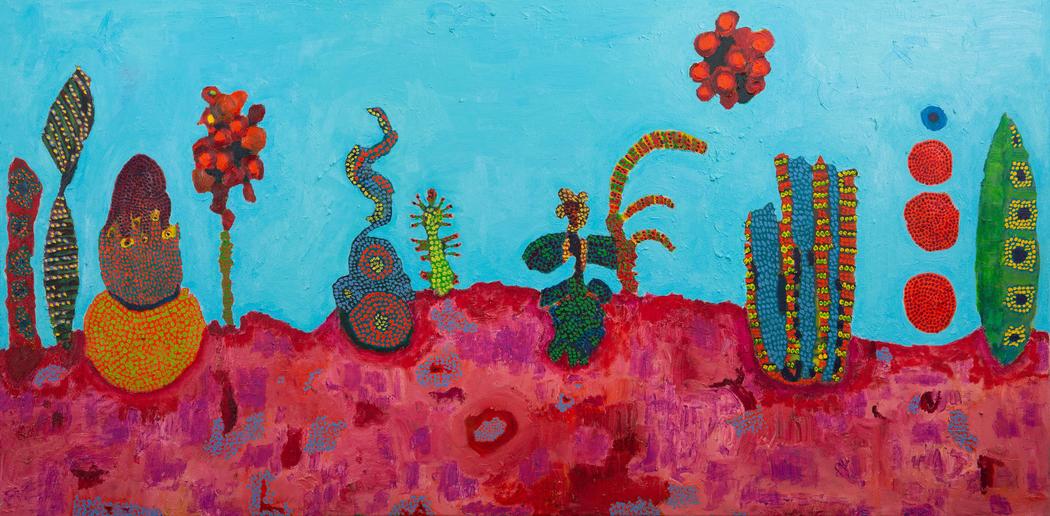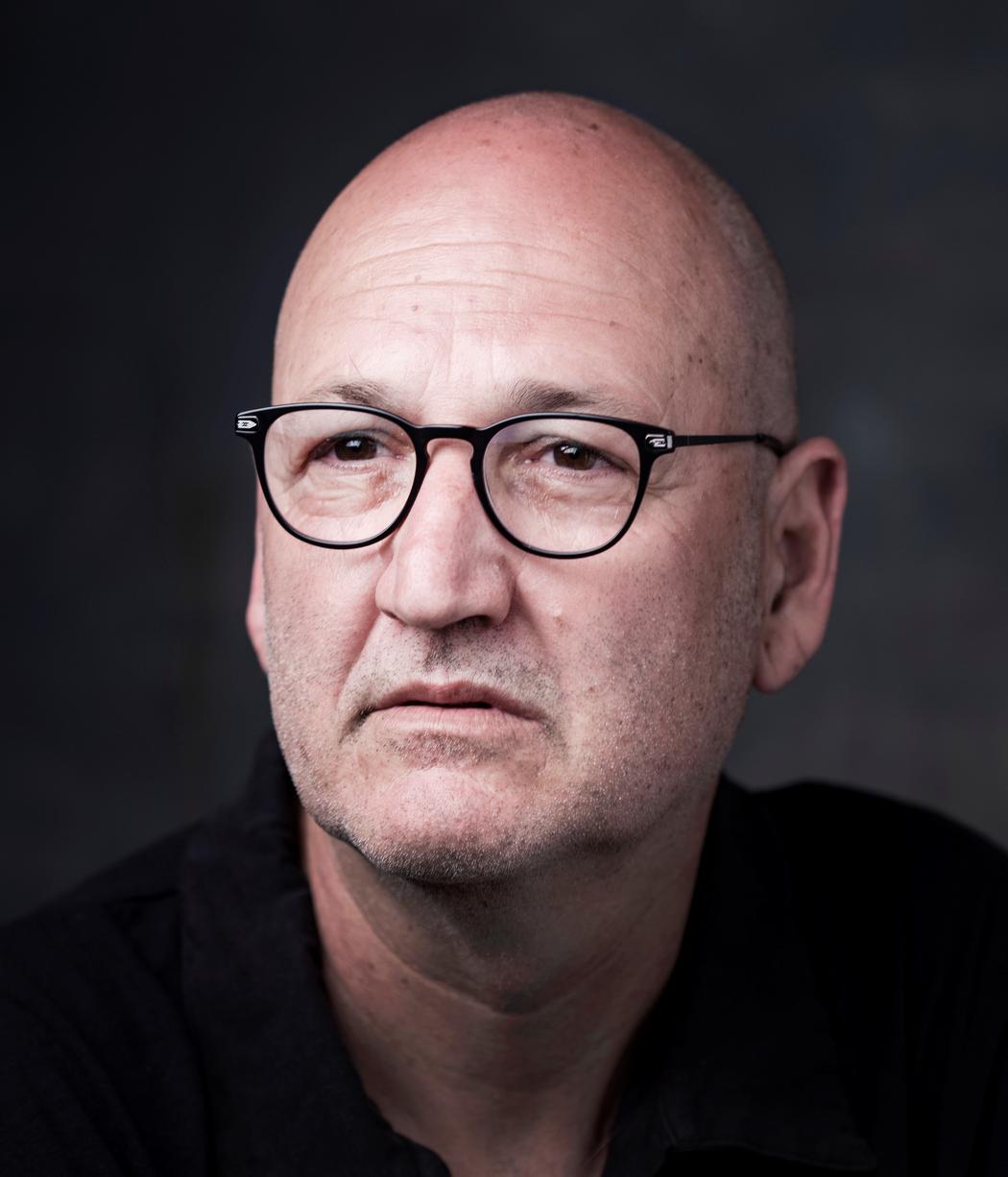Ori Aviram
Your artistic journey began after a career in television and advertising. What triggered the moment when you decided to fully dedicate yourself to painting?
There was no specific moment when I decided to dedicate myself to art. It was a long process that began in the army, where I started sculpting, continued with film studies and work in the field. All these years there was a constant flirtation with the thought of being an artist and a practice of sculpture. Because I loved Jean Dubuffet, I decided that I would leave everything and become an artist at the age of 43, just like he did. Luckily, at the age of 34, with my divorce, I decided to have my first exhibition.
 Ori Aviram | Anxiety | 2023
Ori Aviram | Anxiety | 2023
You often describe color as something that can be “sculpted, shaped, engraved, and shoveled.” Could you tell us more about how you physically interact with paint during your process?
I treat paint like a plastic material, like clay. Of course, I also work with it like you would work with oil paint, but I have no problem handling it with tools other than a brush and putty knife. For example, I can use it as glue and stick papers together with it. Probably because I started as a sculptor, I have no problem putting the entire contents of the tube on the canvas and then cutting, crushing, and scratching it.
Many of your works are painted on unconventional surfaces—old books, bibles, or monetary notes. What attracts you to these materials, and how does their history influence the final artwork?
As a child and teenager, I was a devout bookworm. I may derive a certain pleasure from defacing books and drawing on them. The relationship between painting and text fascinates me. When drawing on pages of the New Testament from 1704, the entire drawing takes on additional meanings and layers beyond its pictorial value.
 Ori Aviram | Heaven | 2002
Ori Aviram | Heaven | 2002
Biblical stories and mythology appear as recurring references in your earlier figurative works. How do these narratives still resonate within your abstract compositions today?
The preoccupation with the Bible and mythology was a continuation of the tradition of Western painting, relying on ancient texts and actually illustrating them. Abstract painting, which broke out after the birth of photography which made the role of describing reality redundant. That role had been one of the functions of painting for years. Now liberated, painting is free to engage with the elements of painting, line, color, and composition, and the interplay between them. Such freedom was created in me as well, and in fact the Bible and mythology play no role in my abstract paintings.
You mention the “gap between intention and outcome” as a key element in your creative process. Can you describe a moment when this tension led to an unexpected artistic discovery?
Every work actually contains an unexpected discovery/achievement/result at the end. The initial intention encounters the limitations of the material, its will in fact, and the material injects itself into the intention, and this combination always contains novelty and surprise. For example, in an abstract painting that I am working on, I painted a lot of white dots but they did not blend in and did not match the other colors. I waited for them to dry and painted them in cobalt purple.
The result stunned me with its beauty. It was a complete surprise.
 Ori Aviram | Heaven | 2023
Ori Aviram | Heaven | 2023
Your color palette is bold and expressive, ranging from deep reds and purples to bright greens and yellows. How do you select your colors, and what emotions or ideas guide your choices?
Very easy question. My choice of colors is very spontaneous and immediate. I look at the tubes and just choose what comes to mind first. Ideas or emotions are hardly involved. But, intuition is defined as a rapid and unconscious process of knowing, and I tend to agree with that. So ideas, concepts and emotions are involved in the process, but they do not cross the threshold of consciousness.
How do you see the relationship between chaos and order in your paintings?
You can see in every painting an attempt to create order within chaos. Perhaps even all of life is such a process. And although the second law of thermodynamics ultimately decrees chaos for us, in the meantime, as long as we are here, we will make order. In my paintings, I try to create a balance between order and chaos. Too much order is rigidity, inflexibility, and lifelessness. Too much chaos creates clutter, meaninglessness, and beautylessness.


Leave a Reply